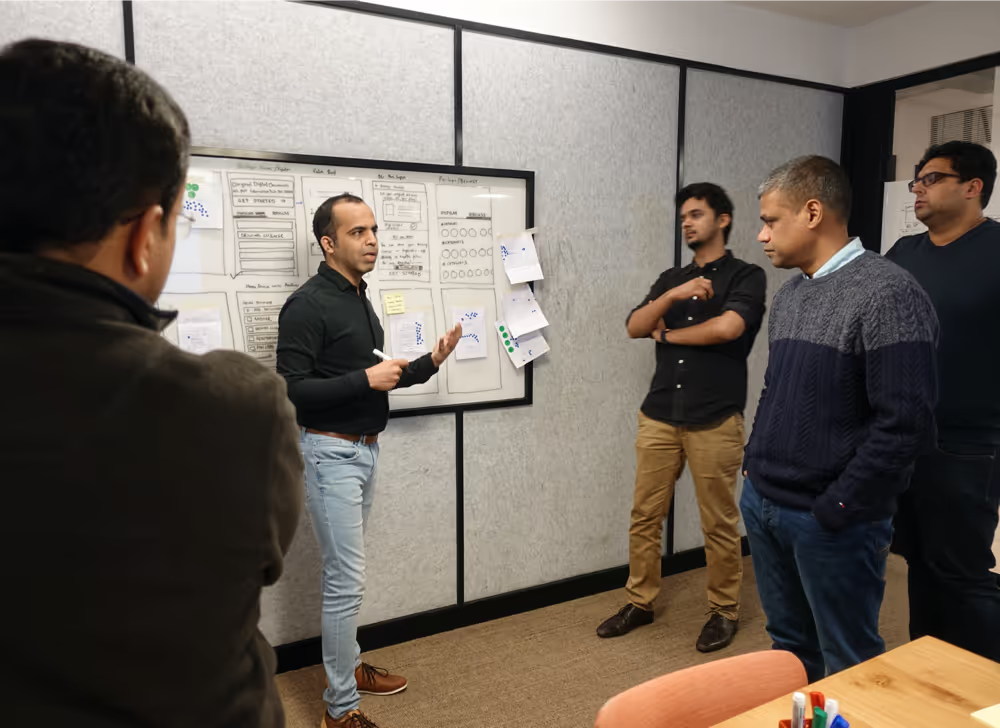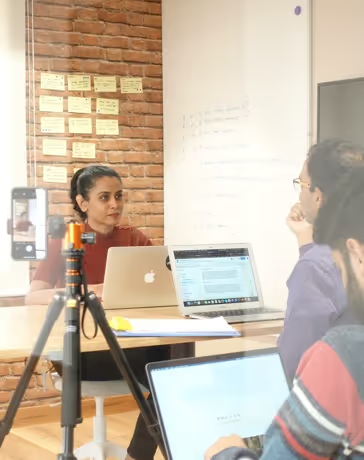



A Design Sprint is a step-by-step process for answering critical business questions, creating new products or improving existing ones.
Design Sprints were created by Jake Knapp while working with startups at Google Ventures. They're a “greatest hits” of business strategy, innovation, behavior science, design thinking, and more — packaged into a battle-tested process that any team can use. Since their conception in 2016, Design Sprints have been used by product leaders in companies like Uber, Slack, Google and Twitter to solve problems and build better products.



Gather experts from different teams to understand the company, the product and the challenges faced. Based on these inputs, align the team and pick the right problem to solve during the Design Sprint.
Guide the team through a series of structured brainstorming processes to bring out the best ideas from each team member, working alone but in tandem.
Build on each other’s ideas to create one solution, which combines the best ideas from everyone and solves the problem identified at the beginning of the Design Sprint.
In just a day's time, create a realistic, clickable digital prototype of the team's solution.
Test the prototype with actual users, observe their interactions, collect feedback and generate insights on what’s working and isn't.

A high-fidelity clickable prototype that looks and feels like a real product

Usability test results and recordings of actual users

Insights and recommendations from usability testing to improve the product
After the Design Sprint, we work on the prototype created during the sprint to make it production ready. We do this by...
Iterate and improve upon the ideas generated during the sprint to add details to the prototype.
Improve the visual finesse of the prototype created during the sprint, and define a style guide.
Work on the user experience for the secondary screens and remaining scenarios across the product.
95% of new products fail, based on a study of over 30,000 products by Professor Clayton Christensen at Harvard Business School.
Design Sprints are a great way to visualise and prototype ideas quickly, and then test them with your target group before investing in development.
One in six projects had a cost overrun of 200%, on average, and a schedule overrun of almost 70%, according to a study by Harvard Business Review.
With Design Sprints, you can explore product ideas fast through rapid prototyping, without writing a single line of code.
It is hard to imagine that changing a single button could increase sales by $300M each year on an ecommerce website, but that is exactly what happened in this case.
Design Sprints help you drop the guesswork and test your product with real users to bring out valuable insights and make decisions.

We have used Design Sprints to improve on-boarding for high growth products, help teams kick off a new product, reimagine products from the ground up and much more. Our clients love Design Sprints because they replace guesswork with real, tangible progress.